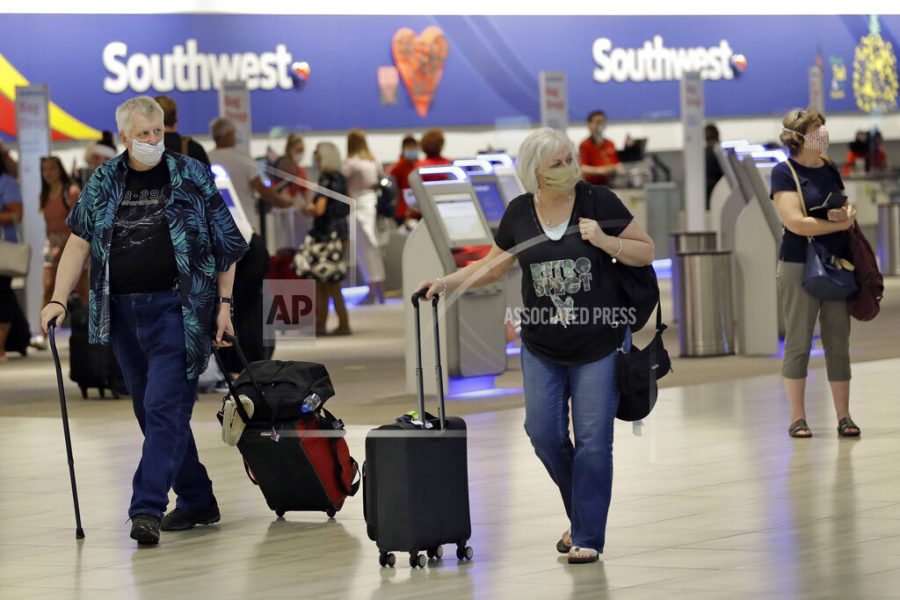How have we not been doing this this whole time?
Let’s normalize wearing masks while traveling
AP/Chris O’Meara
At Tampa International Airport, travelers outfitted in protective face masks make their way past the ticket counter. Many major airlines, including United and American Airlines, require masks for travel.
Though many grumble and groan over the struggle of wearing a mask, at the very least we can recognize that masks have kept many of us healthy over the course of this past year and a half. Really, masks should become more normalized, especially when traveling.
This past summer, the mask mandate was finally relaxed. Everyone ripped off their masks in pure joy, excited to finally see people’s faces again after largely relying on the eyes for any type of emotional display. As we came together in the belief that COVID was mostly behind us, we felt comfortable and everything seemed more or less back to normal. But, almost like clockwork, within a week or two, a bunch of people came down with a common cold including some combination of a scratchy throat, runny nose, fatigue, and other symptoms.
If the pandemic has taught me anything, it’s the benefits of masks in warding off disease. I’ve been fortunate enough to stay mostly healthy during the pandemic. Even when I traveled for the first time this past summer, I came home with not even a sniffle or the slightest scratch in my throat.
At any given airport, you come into contact with hundreds of strangers who’ve been who knows where in the last 24 hours. Then, you board a plane, which can really only be described as a petri dish of diseases, and sit in too close-for-comfort proximity with a random person or persons.
To elaborate, at Chicago O’Hare, the starting point for many Trevians’ travel, there are an average of 2,520 aircraft operations per day, the most of any airport in the world. These flights reach approximately 225 destinations across the globe in North America, South America, Europe, Asia, Africa, and Oceania.
I can only imagine what diseases circulate through the air at major airports and train stations. Beyond influenza, the common cold, and the coronavirus, I’m sure in my time passing through O’Hare, either sitting next to a stranger or simply heading to the bathroom, I’ve come into contact with an abundance of obscure viruses.
However, we should not limit mask-wearing to just airports; we should extend the practice into other forms of major travel like long-distance bus and train rides.
According to Dean Blumberg, the chief of pediatric infectious diseases at the UC Davis Children’s Hospital, “A range of new research on face coverings shows that the risk of infection to the wearer is decreased by 65 percent.” In addition, this past year saw low influenza cases.
In traveling to a new place, it is the respectful thing to do to explore the community or the culture in a way that leaves no footprint. It is unfair for us to take advantage of what our travel destinations have to offer all while potentially bringing some disease to the place and its people. Though many of us don’t travel to remote locations that are unexposed to disease, we should really act as though we are each time we travel. It’ll benefit the community by not adding the disease to their residential environment, and it’ll also benefit us as we work to stay healthy during our travels and after our return home as well.
Today, mask-wearing has spread across the world and has proved to be one of the strongest tools in the prevention of COVID transmissions. However, it shouldn’t stop when the pandemic finally ends. We should continue wearing masks long beyond any traces of COVID, especially at airports and other travel hubs. Personally, I plan to take up this practice in the future. Sure, I’ll be giving up my precious American liberty of showing the lower portions of our faces, but I’d rather do that than contract some potentially deadly disease and then pass it on.







































